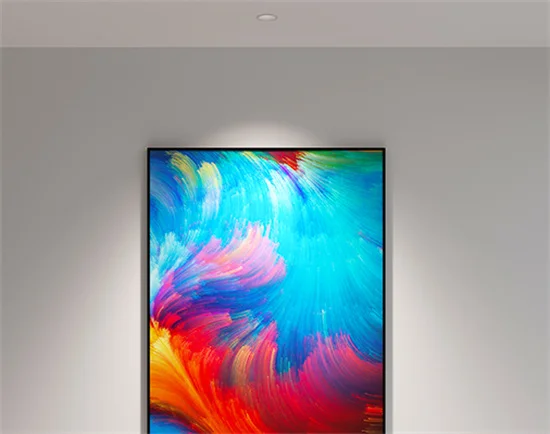Have you ever noticed how some light bulbs make everything in your room look lively and vivid, while others cast a dull, almost lifeless glow? That difference often comes down to something called CRI, short for Color Rendering Index. CRI is a scale from 0 to 100 that shows how true-to-life colors appear under a specific light source compared to how they’d look in natural daylight.
Why CRI Matters
- Color Accuracy
When the CRI is high (close to 100), a light source does a great job of rendering colors the way you’d see them in natural light. If the CRI is lower, certain hues might look faded or even take on weird tints.
- Everyday Comfort
In a home or workplace, good color rendering can make interiors feel more welcoming. Ever painted a room a warm beige and then noticed it looked washed out under certain bulbs? That’s a CRI issue.
- Professional Settings
From fashion retailers trying to highlight true fabric colors, to museums showcasing artwork, to medical facilities needing precise color differentiation—CRI is often the unsung hero.
How CRI Is Measured
Most manufacturers follow a standardized procedure to determine CRI. They start by shining the light on a set of color samples—each with known qualities—and then compare how those samples appear under a reference light source (commonly daylight or incandescent light) with the same color temperature. If the tested light makes the samples look very close to how they appear under the reference source, the CRI score ends up higher. If not, it’s rated lower.
The classic test uses eight color swatches, often labeled TCS (Test Color Samples). Some modern assessments go further by including additional samples, like R9, which focuses on deep reds—a challenging hue for many LEDs and fluorescent lights to reproduce accurately.
CRI Scores in Context
- 90–100: Excellent. Ideal for photography, art galleries, high-end retail, or any task where color fidelity is essential.
- 80–90: Good. A common range that usually satisfies most home and office needs.
- Below 80: Colors may appear noticeably “off,” which can be fine for simple outdoor fixtures or situations where exact color isn’t critical, but it may disappoint if you value vibrant colors in your living spaces.
CRI Versus Other Lighting Metrics
- Lumens: Measures brightness, not color accuracy. A bulb can be extremely bright but still have a poor CRI.
- Color Temperature (CCT): Describes how warm (yellowish) or cool (bluish) the light appears, typically labeled in Kelvin (K). Color temperature and CRI are separate measurements—something can be warm white and still have a high or low CRI.
- TM-30: A newer color fidelity measure that goes beyond CRI and breaks down color performance with more detail. If you see a TM-30 rating, it can provide a more nuanced view than CRI alone.
Real-World Examples
- Home Lighting
In a living room or bedroom, bulbs around 80+ CRI generally keep colors lively enough for daily life, from your furniture upholstery to that big painting on the wall.
- Office and Commercial Spaces
Offices aiming for better productivity might choose lighting with a CRI in the 80–90 range. In retail, especially when presenting items like clothing or groceries, higher CRI can enhance how appealing products look.
- Specialized Environments
Art studios, photography sets, and medical examination rooms often choose 90+ CRI, since subtle color differences can be critical for accurate work.
Tips for Choosing High-CRI Lighting
- Check the Label: If a bulb doesn’t advertise its CRI, or if it’s vague, there’s a chance the CRI is on the lower side.
- Consider Your Priorities: For color-critical tasks (like painting or design), spend a bit more for bulbs with 90+ CRI. For a hallway light, 80 CRI might be perfectly fine.
- Look Beyond CRI: While CRI is helpful, remember that flicker rate, luminous flux (brightness), and color temperature also play big roles in how a space feels.
The Bottom Line
CRI can make all the difference between a room that feels warm and vibrant versus one that looks flat and uninspiring. Whether you’re a homeowner wanting a cozy atmosphere, a retailer trying to highlight products, or an artist needing precise colors, understanding CRI is a key step in creating lighting that looks and feels right.
The next time you shop for bulbs, take a moment to look beyond the wattage and brightness. Spend a little time checking the CRI—your eyes (and anything you’re illuminating) will thank you.




